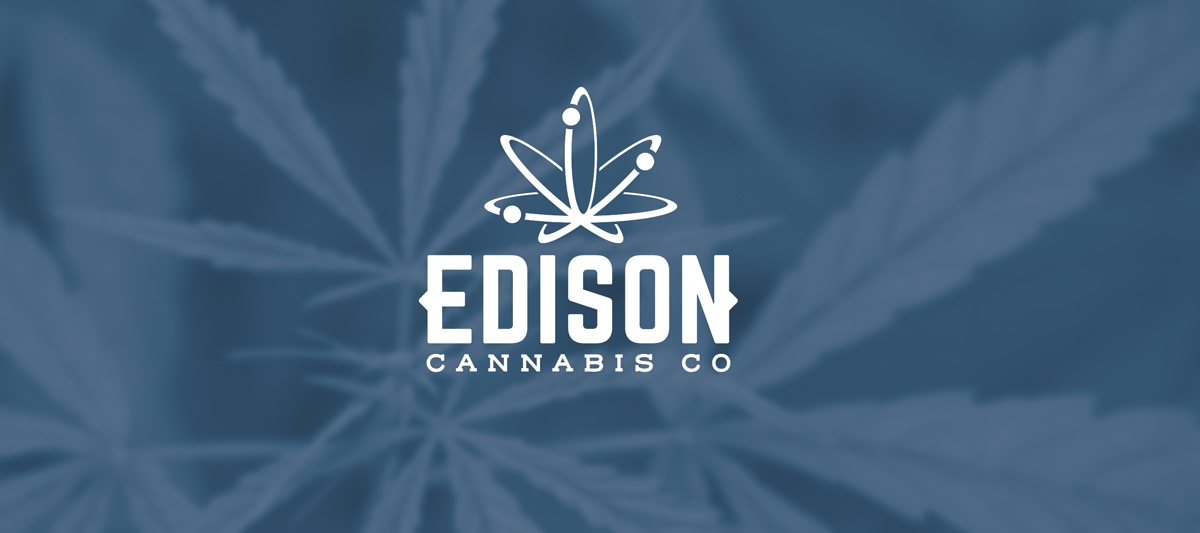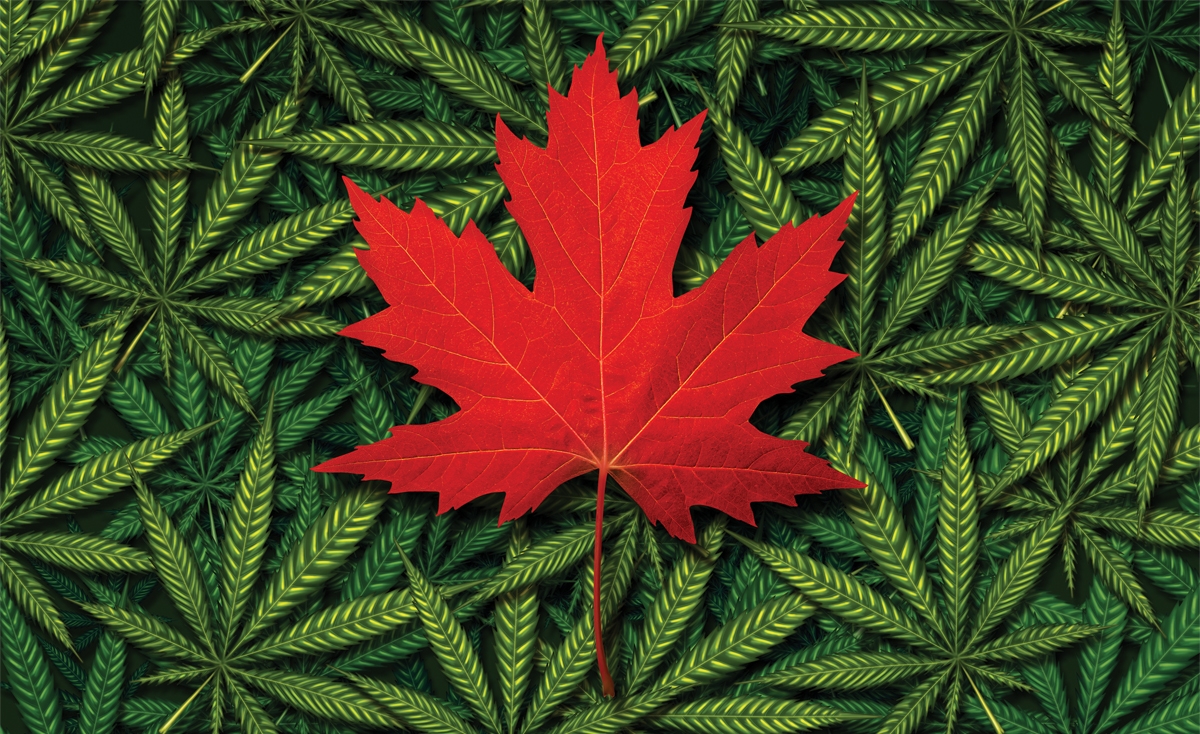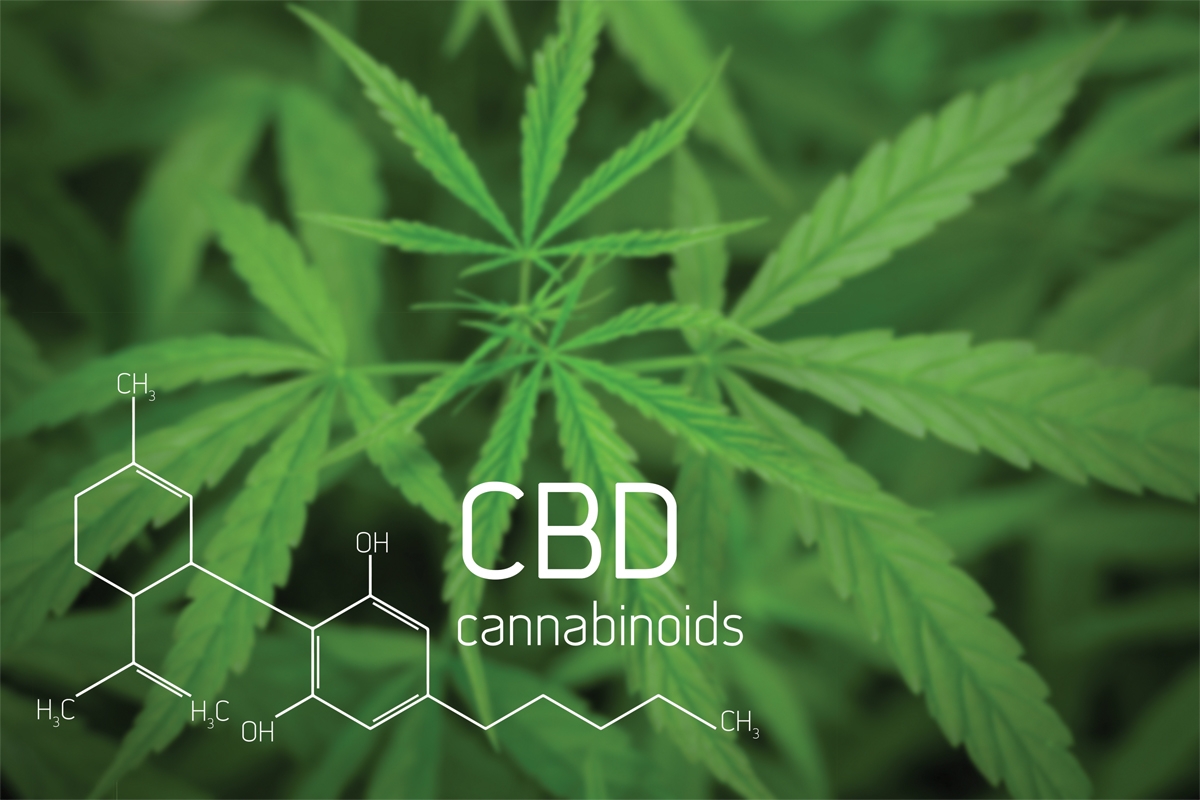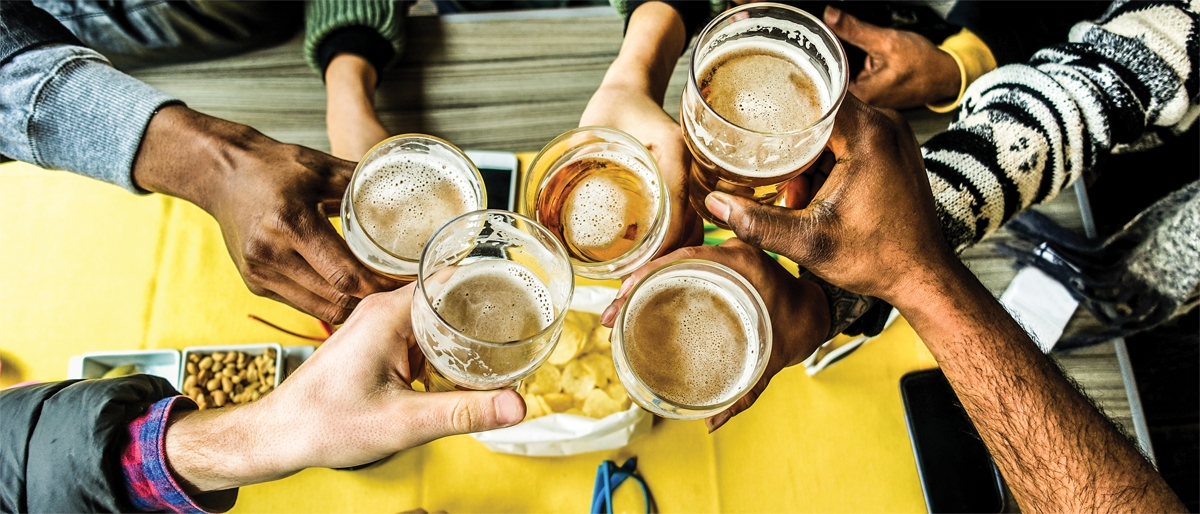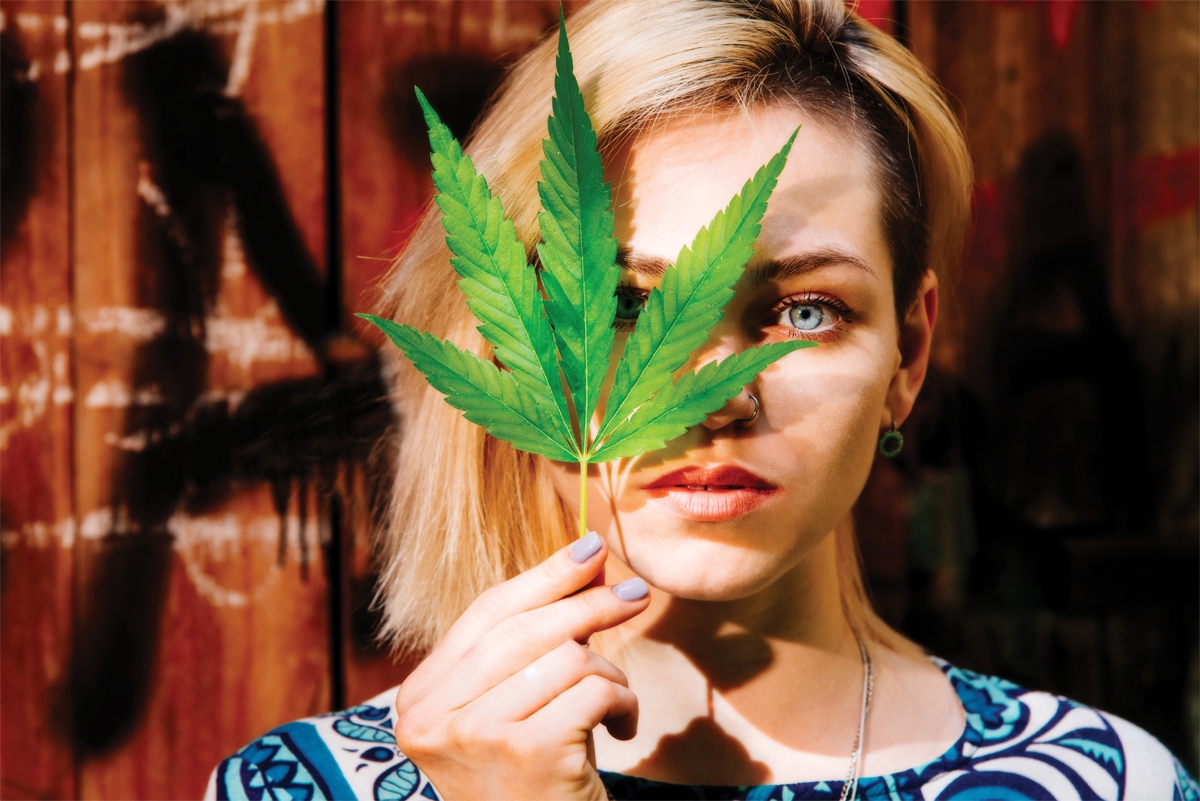
Something in the air
Cannabis. Pot. Grass. Weed. Marijuana.
Whatever you call it, the leafy green plant is about to go public.
For most Canadians, it was a complementary part of coming-of-age for someone to offer you a toke and then puff-puff-pass it on. More than a few took it further than that first joint, but whether you kept up the habit or not, the spectre of this forbidden plant lingered behind a veil of pop culture.
Across generations, this token of rebellion refused to waver in the face of increasingly strict regulations and became both a symbol of freedom and a weapon in a war that has had unquestionable influence on the politics of this country.
Cannabis is, colloquially, a drug. It is currently both contraband and medicine, but come Oct. 17 we will witness one of the most infamous members of the botanical world turn from outlaw to household accessory.
What Are We Smoking?
The term Cannabis refers to an entire genus of plants that is found worldwide but is believed to have originally sprouted from southern Asia. While botanists are debating exact divisions, the two primary species are Cannabis sativa and Cannabis indica. The differences between the two are mainly physical, with sativa growing taller and thinner and the indica variety a bushier and broader specimen.
In all subspecies, cannabis retains several notable qualities that have made it a popular resource throughout history. Surprisingly, most cultures utilized this plant in textiles (such as paper, rope, and clothing) called hemp, as an alternative to wood, cotton, or other less durable materials.
Of course, the better-known use for cannabis involves its psychoactive qualities. Unpollinated female plants produce flowers coated with chemical compounds, notably cannabidiol (CBD) and tetrahydrocannabinol (THC).
The varying levels of these cannabinoids are how healthcare experts and recreational users differentiate between strains and their effects on users.
CBD induces a state of relaxation that includes lower blood pressure, reduced heart rate and drowsiness. Many individuals seek out cannabis strains with high CBD for anti-inflammatory and anxiety-related issues.
THC is the better-known cannabinoid, which provokes a psychoactive reaction that many users report as euphoria, neuroticism and mild hallucinogenic effects. Typically referred to as a ‘high,’ these properties are currently being researched to determine effectiveness in treating a multitude of psychological conditions and other brain-related illnesses.
We can trace the impact of cannabis in medical, recreational and spiritual practices back thousands of years, but it is important to point out that the plant was not always as taboo as our culture has deemed it.
Deep Roots
The origin story of cannabis is like other types of foraged herbs; as a treatment for minor complaints and overindulged in by those with access to large quantities.
Due to its mind-altering capabilities, different international communities saw cannabis fall in and out of favour over the years, and it wasn’t until the early 20th century that Canada began cracking down.
Technically, this isn’t the first time marijuana has been legal inside our 150 years as a nation.
Thanks to racially motivated propaganda campaigns by Mackenzie King in 1911 in response to the pan-Asian riots in British Columbia, and pressure from the League of Nations in the 1930s, Canada moved to enact strict drug prohibition that led to severe penalties for use and possession of cannabis.
Usage skyrocketed in the 1960s thanks to relaxed social customs, anti-establishment rhetoric, and the introduction of other, stronger psychoactive stimulants to the youth of North America.
This unorganized movement saw decriminalization brought to the forefront of Canadian politics. Few are aware that the first attempts to open the cannabis conversation was started by former prime minister Pierre Trudeau.
The Royal Commission of Inquiry in the Non-Medical Use of Drugs, now referred to as the Le Dain commission, was formed in response to the popularization of the drug in the growing Canadian middle-class that the Liberal Party was keen to appease. The research carried out by the Le Dain commission not only catered to academic and legal expertise but saw participation from “cultural experts” such as John Lennon, Timothy Leary and Frank Zappa.
In the end, a report was issued that was immediately labeled by policy analysts as “one of the most politically-explosive documents ever put before the government.” The Le Dain report recommended sweeping changes to the prohibition landscape, including full decriminalization of cannabis, further study into its health ramifications and independent provincial control concerning possession and use.
This was more than a little provocative for the times, and despite the resources that were diverted to create this in-depth analysis, the federal government did little to act on these conclusions.
The percentage of users continued to grow, only instead of the friendly “flower-power” circles that were till-then the wellsprings of pot distribution, gangs who saw the potential for fast and easy wealth began positioning themselves at the head of the table.
Criminal Control
During the past 20 years, there has been major progress towards legalization, but every step forward seemingly was hampered by the fact that cannabis has long-since been embedded in criminal enterprise.
Classifying all avenues of cannabis production as illicit for the past century has led to a sophisticated system of organized crime that relies on coercive violence to achieve dominance in an industry that has demanded high-strung competition.
As recently as last year, Statistics Canada reported that of the $5.7-billion industry, 90 per cent of all cannabis was purchased from illicit sources.
This was 16 years after medical marijuana had been legalized.
The deeply entrenched handle that illegal operations have on cannabis consumers has been nearly impossible to remove via traditional policing efforts. Since Richard Nixon declared the War on Drugs, the abilities of law enforcement to keep up with local dealers, low-level gangs and cartels have been chronically mismatched. There is always money to be made in supplying drugs to the general population, and the use of force by the criminal justice system further exacerbated the violence on both sides to secure the profits that come from cannabis sales.
Unfortunately, another ramification of harsher punishments for cannabis means the Canada’s jails are often saturated with non-violent offenders. The Department of Justice claims that in 2016 more than half of reported drug offences were cannabis related, with more than 75 per cent of those charges for possession alone.
Going forward, each province will have protocols on regulation, and there will undoubtedly be fewer Canadians in jail because of cannabis. However, what is unclear is what enforcement laws will look like.
While it is important to reduce the black-market share of the cannabis industry and prevent youth access to pot (two major reasons for legalization, according to the Cannabis Act), what Canadians will need to see is reliable methods of policing for these laws to make sense.
Medical Practice
Cannabis has been used in health care for millennia, though it wasn’t until the 21st century that medical marijuana found its way back into Canada.
In 1996, Terrance Parker was arrested for cannabis cultivation, possession, and trafficking after his small-scale operation was discovered.
Parker had been diagnosed with epilepsy when he was four years old, and despite several medical operations, the seizures he experienced only became worse as he entered adulthood. Doctors discovered that after he began smoking marijuana his condition saw signs of improvement.
No stranger to the legal system, Parker had been arrested several times for possession, but the charges were always dropped for medical necessity. After his brush with the law in 1996, he decided enough was enough, and appealed to the Canadian Charter of Rights and Freedoms.
In 2000, the Ontario Court of Appeal’s ruling protecting Parker’s right to life, liberty and security of person opened the way to cannabis decriminalization.
A year later, the Marihuana for Medical Access Regulations were enacted, and certain patients were granted a licence to cultivate their own medical cannabis or receive it from a licenced grower.
There was then a stronger push to research the medical attributes of cannabis.
Its anti-inflammatory qualities and mild-to-chronic pain relief are — currently — the most common reasons for seeking a marijuana prescription.
Strains high in CBD are what relax epileptic symptoms (the kind that Parker experiences), while strains with elevated THC have seen use in psychiatry for bipolar disorder or related mood disorders.
More study is needed to determine exactly how relevant the role of cannabis is for health care professionals. Since we are playing catch-up for the past 100 years of prohibition, we will likely see an influx of small- and large-scale studies on how cannabis aids all sorts of conditions.
A Friendly Future
What most Canadians are paying attention to is not the medical advancements, but rather the looming deadline for when you can pick up a few joints, edibles or oils and sit at home relaxing with the drug.
Finishing what his father started, Justin Trudeau heralded marijuana legalization in his election campaign. Three years on from the federal win, Trudeau announced that legalization would take effect in 2018, startling many who did not expect such a sudden transition.
Regardless, these are exciting times.
It will be interesting to see how a substance that has always existed behind the veil of “look the other way” will so suddenly enter the daylight.
There are still many unanswered questions about how cannabis legalization will affect everyday lifestyles. The impact on criminal enterprise and the justice system, the self-prescribed medical users, use and testing at workplaces, and the multitude of industries that can safely market products using a plant previously that remains illegal in 99 per cent of the world.
During this series, we’ll be investigating how Canada plans to navigate the landscape of legalization, and document how ordinary citizens and business owners are coming to grips with a future of responsible cannabis.

